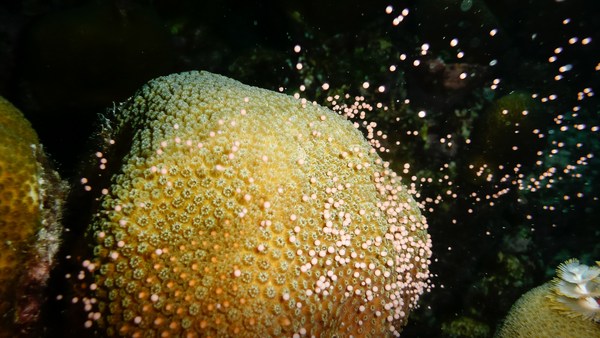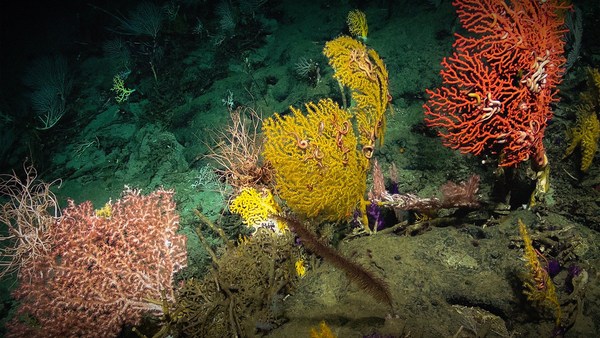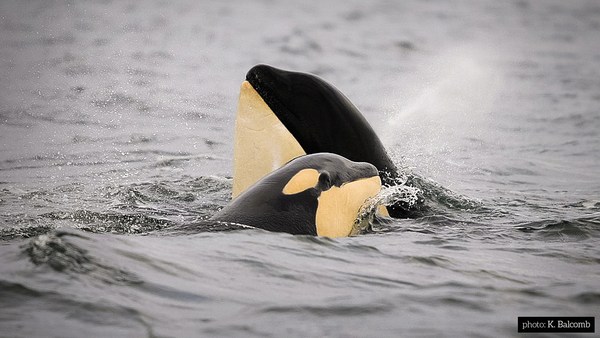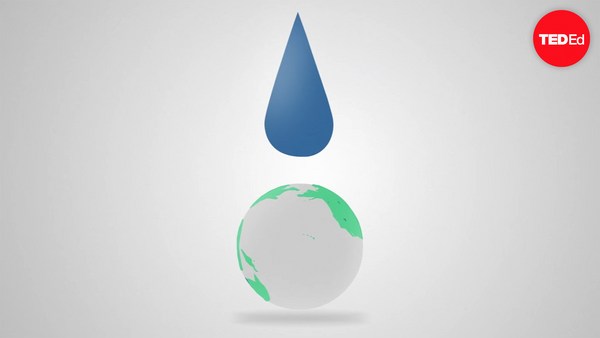Do you ever think about how important the oceans are in our daily lives? The oceans cover two-thirds of our planet. They provide half the oxygen we breathe. They moderate our climate. And they provide jobs and medicine and food including 20 percent of protein to feed the entire world population. People used to think that the oceans were so vast that they wouldn't be affected by human activities.
Well today I'm going to tell you about a serious reality that is changing our oceans called ocean acidification, or the evil twin of climate change. Did you know that the oceans have absorbed 25 percent of all of the carbon dioxide that we have emitted to the atmosphere? Now this is just another great service provided by the oceans since carbon dioxide is one of the greenhouse gases that's causing climate change. But as we keep pumping more and more and more carbon dioxide into the atmosphere more is dissolving into the oceans. And this is what's changing our ocean chemistry. When carbon dioxide dissolves in seawater, it undergoes a number of chemical reactions.
Now lucky for you, I don't have time to get into the details of the chemistry for today. But I'll tell you as more carbon dioxide enters the ocean, the seawater pH goes down. And this basically means that there is an increase in ocean acidity. And this whole process is called ocean acidification. And it's happening alongside climate change. Scientists have been monitoring ocean acidification for over two decades. This figure is an important time series in Hawaii, and the top line shows steadily increasing concentrations of carbon dioxide, or CO2 gas, in the atmosphere. And this is directly as a result of human activities. The line underneath shows the increasing concentrations of carbon dioxide that is dissolved in the surface of the ocean which you can see is increasing at the same rate as carbon dioxide in the atmosphere since measurements began. The line on the bottom shows then shows the change in chemistry. As more carbon dioxide has entered the ocean, the seawater pH has gone down, which basically means there has been an increase in ocean acidity. Now in Ireland, scientists are also monitoring ocean acidification -- scientists at the Marine Institute and NUI Galway. And we, too, are seeing acidification at the same rate as these main ocean time-series sites around the world. So it's happening right at our doorstep.
Now I'd like to give you an example of just how we collect our data to monitor a changing ocean. Firstly we collect a lot of our samples in the middle of winter. So as you can imagine, in the North Atlantic we get hit with some seriously stormy conditions -- so not for any of you who get a little motion sickness, but we are collecting some very valuable data. So we lower this instrument over the side of the ship, and there are sensors that are mounted on the bottom that can tell us information about the surrounding water, such as temperature or dissolved oxygen. And then we can collect our seawater samples in these large bottles. So we start at the bottom, which can be over four kilometers deep just off our continental shelf, and we take samples at regular intervals right up to the surface. We take the seawater back on the deck, and then we can either analyze them on the ship or back in the laboratory for the different chemicals parameters.
But why should we care? How is ocean acidification going to affect all of us? Well, here are the worrying facts. There has already been an increase in ocean acidity of 26 percent since pre-industrial times, which is directly due to human activities. Unless we can start slowing down our carbon dioxide emissions, we're expecting an increase in ocean acidity of 170 percent by the end of this century. I mean this is within our children's lifetime. This rate of acidification is 10 times faster than any acidification in our oceans for over 55 million years. So our marine life have never, ever experienced such a fast rate of change before. So we literally could not know how they're going to cope.
Now there was a natural acidification event millions of years ago, which was much slower than what we're seeing today. And this coincided with a mass extinction of many marine species. So is that what we're headed for? Well, maybe. Studies are showing some species are actually doing quite well but many are showing a negative response. One of the big concerns is as ocean acidity increases, the concentration of carbonate ions in seawater decrease. Now these ions are basically the building blocks for many marine species to make their shells, for example crabs or mussels, oysters.
Another example are corals. They also need these carbonate ions in seawater to make their coral structure in order to build coral reefs. As ocean acidity increases and the concentration of carbonate ions decrease, these species first find it more difficult to make their shells. And at even even lower levels, they can actually begin to dissolve.
This here is a pteropod, it's called a sea butterfly. And it's an important food source in the ocean for many species, from krill to salmon right up to whales. The shell of the pteropod was placed into seawater at a pH that we're expecting by the end of this century. After only 45 days at this very realistic pH, you can see the shell has almost completely dissolved. So ocean acidification could affect right up through the food chain -- and right onto our dinner plates. I mean who here likes shellfish? Or salmon? Or many other fish species whose food source in the ocean could be affected?
These are cold-water corals. And did you know we actually have cold-water corals in Irish waters, just off our continental shelf? And they support rich biodiversity, including some very important fisheries. It's projected that by the end of this century, 70 percent of all known cold-water corals in the entire ocean will be surrounded by seawater that is dissolving their coral structure. The last example I have are these healthy tropical corals. They were placed in seawater at a pH we're expecting by the year 2100. After six months, the coral has almost completely dissolved. Now coral reefs support 25 percent of all marine life in the entire ocean. All marine life.
So you can see: ocean acidification is a global threat. I have an eight-month-old baby boy. Unless we start now to slow this down, I dread to think what our oceans will look like when he's a grown man. We will see acidification. We have already put too much carbon dioxide into the atmosphere. But we can slow this down. We can prevent the worst-case scenario. The only way of doing that is by reducing our carbon dioxide emissions. This is important for both you and I, for industry, for governments.
We need to work together, slow down global warming slow down ocean acidification and help to maintain a healthy ocean and a healthy planet for our generation and for generations to come.
(Applause)





